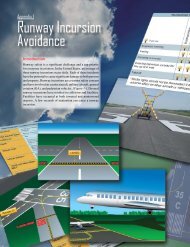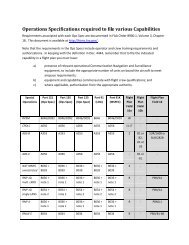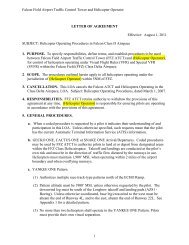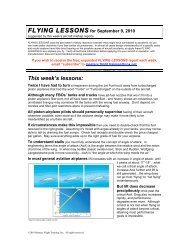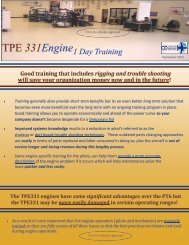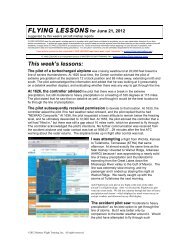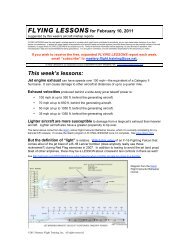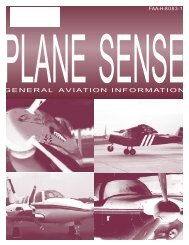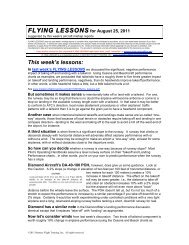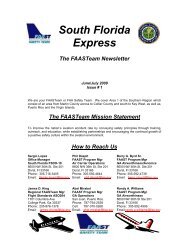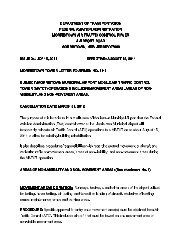WingX 2.0 User Manual - FAASafety.gov
WingX 2.0 User Manual - FAASafety.gov
WingX 2.0 User Manual - FAASafety.gov
You also want an ePaper? Increase the reach of your titles
YUMPU automatically turns print PDFs into web optimized ePapers that Google loves.
When <strong>WingX</strong> has determined that no limit has been exceeded, the appropriate values for the Ramp, Takeoff,<br />
and Landing phases of the flight will be displayed on a green background. The green background is used to<br />
quickly convey a “within limits” weight and balance situation.<br />
Exceeding Limits<br />
If a warning condition occurs, the Weight and Balance Status Section will be displayed on a red background.<br />
The red background is used to quickly convey an “out of limits” weight and balance situation. The Status<br />
Section will also use a red background to display an “Input bad” warning message since <strong>WingX</strong> cannot make a<br />
weight and balance determination. The offending text box will also have a red background.<br />
There are various types of warnings that may occur. Some examples are:<br />
• Exceeding Maximum Zero Fuel Weight, Ramp weight, Takeoff<br />
weight, and/or Landing weight<br />
• Exceeding baggage limits<br />
• Out of CG<br />
• Input bad; e.g. “-9” or “9H7” – must be numbers<br />
All are self-explanatory; "Input bad" occurs when an inappropriate value is<br />
entered and is marked by the text box changing to a red background. Below<br />
are some examples:<br />
Configuration Section<br />
The second line of information is called the Configuration Section as it contains three pieces of information<br />
related to the Weight and Balance display configuration. For screen shots, please see the ones in the Status<br />
Section. The pieces of information are:<br />
• Total Weight, Below Gross, or CG: The text message indicates whether the Status Section is<br />
displaying the aircraft’s total weight, pounds below maximum gross weight, or its CG for each of the<br />
phases of flight. To change this display, simply tap.<br />
• Tap-n-hold for menu: Use the popup menu from the graphical section to configure various settings<br />
of the Weight and Balance page. This text never changes and its only task is to serve as a reminder that<br />
tap-n-hold is the way to change configuration settings.<br />
• Normal, Utility, Acrobatic, or Solo: This configuration message informs the user as to which<br />
envelope is being displayed in the Graphical Section and ultimately, to what envelope the aircraft<br />
loading is being constrained. To change the envelope, use the popup menu – see its description later in<br />
the chapter.<br />
39






